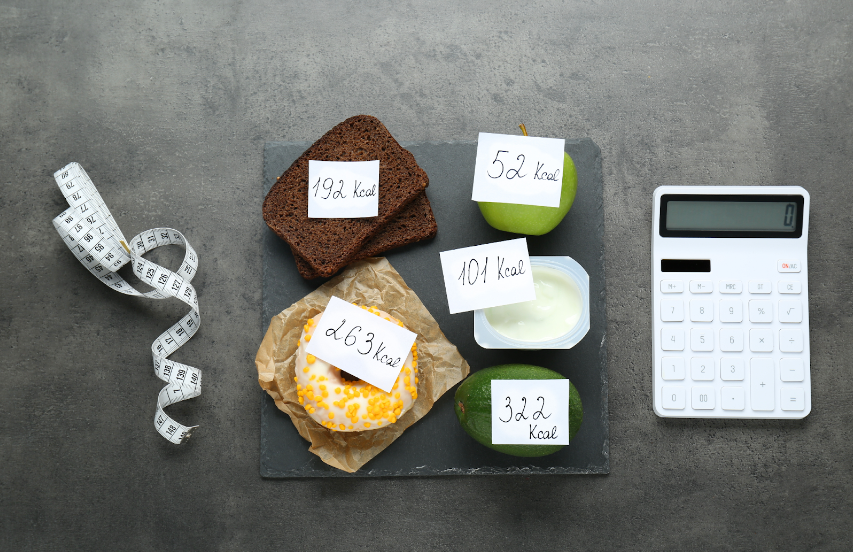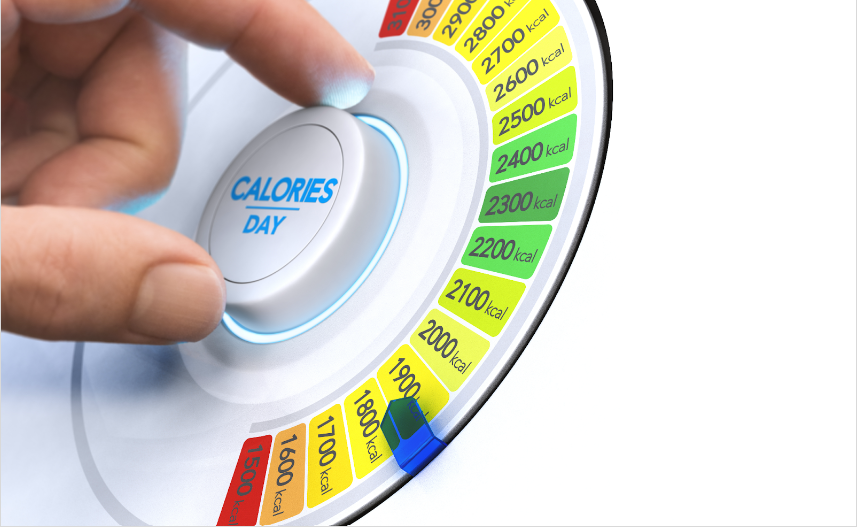If you are trying to lose weight and maintain a healthy lifestyle, chances are you’ve come across countless apps, diets, and workout programs that all promise to give you “the body you’ve always wanted!” While some of these programs do have merit, none of them will work well on their own.

That’s because most of these programs have one missing piece: you MUST be in a calorie deficit in order to lose weight!
Before you research another fad diet or try to take on a new, intimidating workout regime, let’s get back to the basics and learn why a calorie deficit is the main factor in weight loss.
Getting Back to Basics
So many voices on the internet are claiming you can “eat whatever you want and still lose weight.” The problem is that statement is usually followed by “buy my 7-step program to find out how!”
The truth is most people who claim that you can eat whatever you want and lose weight are trying to sell you something. If they were honest, they’d tell you that no exercise program on the planet will work if you aren’t in a calorie deficit. This means that you are burning more calories in a day than you are eating.
To over-simplify it: If you eat more, you’ll gain weight. If you eat less, you’ll lose weight.
What are Calories?
“Calories” is the word science has given to the energy that can be found in food. Your body needs energy to survive, and food provides that energy. Whether you’re running a marathon or taping your toe along to your favorite song, your body is spending energy to perform that task.
Your body collects and stores this energy mainly through proteins, carbohydrates, and fats. Many diets will claim that fats and carbohydrates are unhealthy, but they have actually been a staple in most societies since the dawn of time.
The difference between ancient times and now is the availability of these foods. Rather than eating to survive, it has become socially acceptable in the modern age to eat socially, recreationally, or out of sheer boredom. This has led to an epidemic rise in heart disease, cancer, diabetes, and other dangerous diseases.
So, knowing this, how do we tip the scales back in our favor (pun intended)?
Calculate Your Personal Caloric Needs
If you want to be incredibly precise with this process, the best thing to do is talk to your doctor or nutritionist about your specific needs. However, if you’re just starting out and want to take a more casual approach, you can easily do the math yourself.
One quick way to do this is to find an online calculator and multiply your current body weight by 15. This will give you a general idea of how many calories you should be consuming daily. However, this option is only for those who are somewhat active. If you live a more sedentary lifestyle, this tactic might not be your best option.
If you want a more precise method, take your BMR (basal metabolic rate) and multiply it by a specific number that is dependent on your lifestyle:
- Extreme Athletes: 1.9
- Active Daily: 1.725
- Somewhat Active: 1.55
- Minimally Active: 1.375
- Completely Sedentary: 1.2
Once you have decided which number above applies to you, multiply it by your BMR to find how many total calories you should be consuming in a day.
Creating a Deficit
Once you’ve found the total calories your body needs to function daily, adding a deficit is the first and most important step to losing weight. However, it’s worth noting that cutting calories isn’t the ONLY thing you need to lose weight. If you’re not losing weight despite calorie deficit, there may be other contributing factors.

It’s generally accepted that to lose one pound, you’ll need to consume 3,500 fewer calories than you consumed the week before. This comes out to 500 calories per day. This can be done in one of two ways.
Exercise
While counting the calories in the food you eat is effective and recommended, it will be a lot harder to achieve weight loss if you aren’t also exercising. This doesn’t mean spending hours at the gym or running 10 miles. It can be something as simple as going on more walks or following a Pilates video a few times a week. Staying as active as you’re able is a great way to keep your body healthy and give you some leeway with daily calories.
Diet
Smartphone apps like Instagram and Tiktok have led people to believe that you need to be eating green smoothies and quinoa salads every day in order to lose weight. While this is true to an extent, it can make cutting calories seem far more intimidating than it already is.
An easy way to cut calories without making any drastic changes is simply adjusting your portion sizes. If you regularly order popcorn at the movie theater, opt for a small rather than a large one. If you love getting two huge slices of New York-style pizza at your local shopping center, switch to one slice and a side salad.
Small changes like this can help you ease into a calorie deficit and create healthier habits over time. From there, you can start swapping out all those empty calories for healthy, more nutrient-dense options.
The Dangers of Cutting Too Many Calories
Now that you know the math behind cutting calories, you might be tempted to cut more than 500 per day. After all, fewer calories equals more weight loss, right?!
Yes and no. While cutting calories slowly over time is healthy, you don’t want to do this for too long or too quickly. In fact, nutritionists will highly object to you cutting more than 1,000 calories per day. Not eating enough food over time will put your body in starvation mode and can crash your metabolism.
This has led to a new concept that the fitness industry is calling “reverse dieting.” Individuals who have gone too long restricting their calories have to slowly increase them to bring their metabolism back up to optimal levels.
Moderation
Health and sustainability lie in moderation. Just as all types of food should be eaten in moderation, a calorie deficit should be applied in moderation as well. Once you’ve learned how to cut calories and have achieved your goal weight, it’s time to turn those new habits into a sustainable lifestyle. This will help keep you happy, healthy, and disease-free for years to come.






